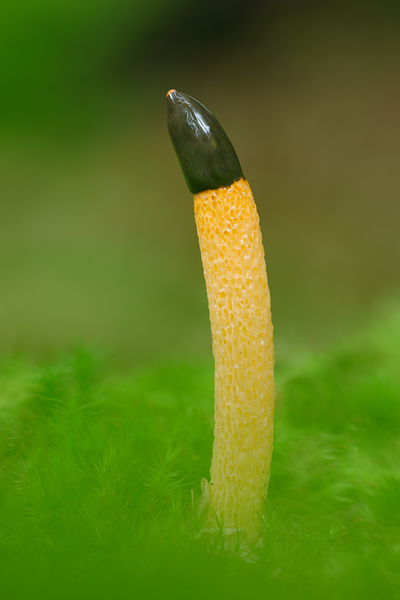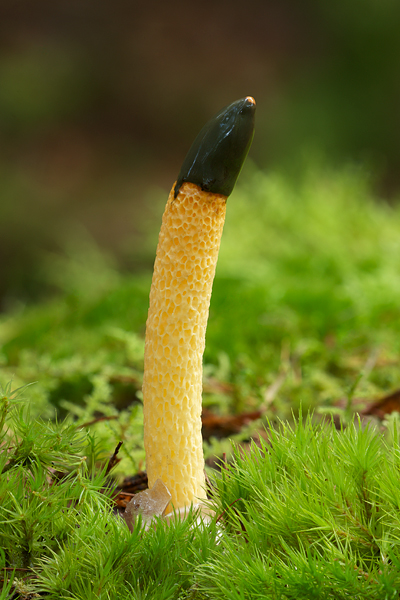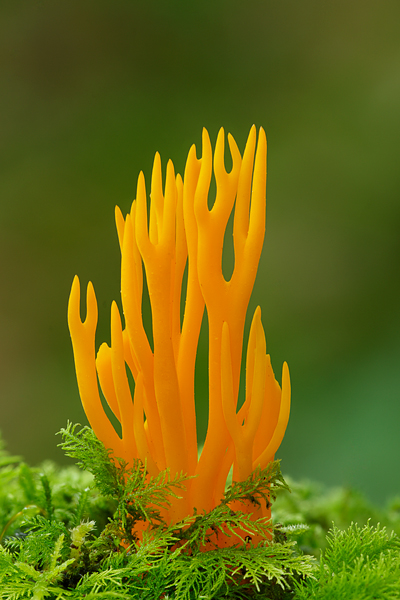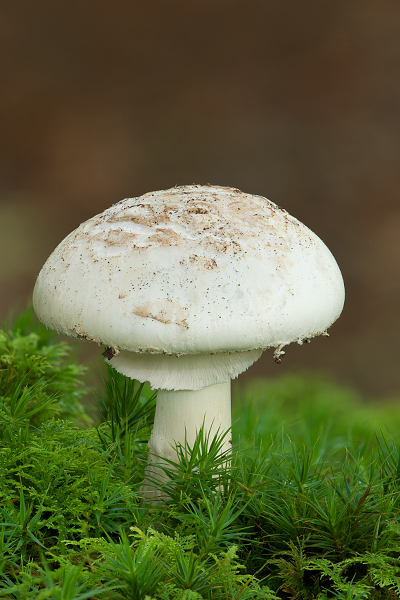Fungus Foray
Above: subject in heavy shade on old tree stump. I focused part of the way into the subject to retain as much focus as possible through the subject. Nikon D3x 100mm macro, mirror lock-up and fill-flash, tripod.
A large part of my time recently has been focused on getting the remaining images for a new quick reference guide to dragonflies due out in early spring and completing a few other photographic contracts. However, I did manage to squeeze in a little time for fungi this week, visiting the woodland demesne of Tollymore Forest, which is not far from my home.
Tollymore is a well-known site for fungi and one of the best in the province. It has a wide diversity of woodland habitat and can be a very productive site when conditions are right.
The weather was mixed with sunshine and showers, which makes the whole process a bit more challenging not to mention the midges, which add to the frustration.
October is generally one of the best months of the autumn period for fungi, and after all the recent rain, we’ve had I was hopeful that it would produce an early flush.
I had a few target species in mind, but was rather disappointed with the real lack of suitable material to photograph. Some of the more interesting species were already compromised by the slugs, which rendered them useless for photography. Despite the level of rain, many areas were still quite dry in places, which was surprising.
One of the great advantages with macro is that you can switch your plans and focus on other subject matter as it presents itself. This site has many species of mosses and most were at their best due to the largely wet conditions of the last few days. Mosses as a group are often overlooked due to the difficultly in identifying all but the most common species, but it did however, present me with an opportunity to update my files with some better examples of relatively common species, which I never seem to get round to doing.
Above: subject growing amongst ground moss. Camera placed on the ground allowing foreground to go out of focus. Nikon D3x 200mm macro, mirror lock-up and fill-flash, tripod.
The latter part of the afternoon proved more productive for photography than the morning which had more intermittent showers. I managed to find a small group of Dog Stinkhorns Mutinus caninus, which were growing in quite a good photogenic position. Stinkhorns are phallus-shaped in appearance with a conspicuous dark tip. They are often found in small numbers among leaf litter or wood debris. The mesh-like structure develops inside an egg-like case and emerges very quickly but is easily damaged.
Several specimens were growing in good photographic positions in reasonable light, which allowed me to experiment with different viewpoints and techniques.
Above: subject growing amongst ground moss. Camera position, slightly elevated. Nikon D3x 200mm macro, mirror lock-up and fill-flash, tripod.
Other species that I came across included nice examples of the Yellow-Antler Fungus Calocera-viscosa, and the False-Deathcap Amanita citrina.
Above: subject growing on fallen trunk. The additional height gained from the fallen trunk allowed me to use a smaller aperture to retain a bit more depth of field and still keep the background reasonably well diffused. I used a small paint brush to remove the tiny bits of soil particles which saves cloning. The Nikon D3x 200mm macro, mirror lock-up and fill-flash, tripod.
Above: subject growing among ground moss. Camera positioned as close to ground as possible to enable a smaller aperture to be used to retain a bit more depth of field while keeping the background diffused. The Nikon D3x 200mm macro, mirror lock-up and fill-flash, tripod.
Most of the images were shot with my 200mm macro and R1C1 flash setup on the tripod. Many fungi often grow in areas of heavy shade and flash is indispensable in these situations. It also adds a little contrast and helps with the problem of colour cast.





